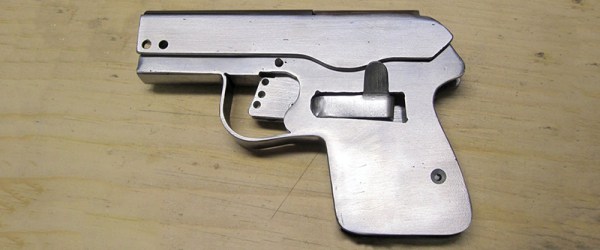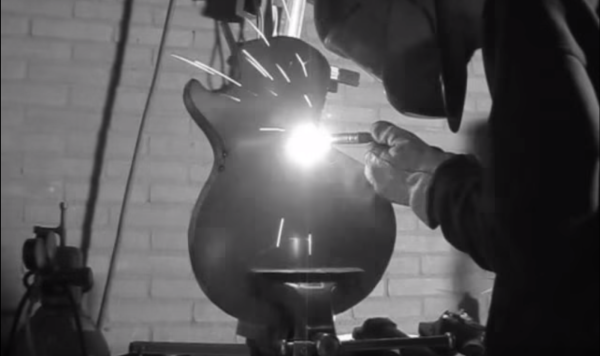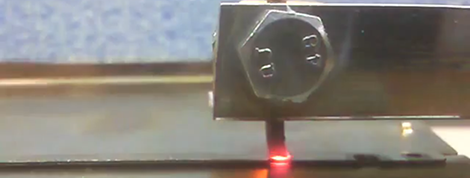Floating around the Internet are plans for a semi-automatic pistol constructed out of sheet metal. Like so many plans for 3D printed guns, it appears no one has actually built one of these pistols. It exists only as a technological construct, with diagrams you can photocopy, trace onto a few bits of metal, and presumably assemble into a gun. The only proof these parts can be turned into a gun-shaped object are a few random blog posts from two years ago showing a very ugly pistol spray painted matte black.
[Clinton Westwood] decided to take up the challenge of turning these plans into a real, working gun. He’s documented his efforts on YouTube and put a bunch of pictures up of the entire build process. The gun doesn’t work quite yet, but it almost does, and he’s doing this entirely in a garage shop, with tools anyone can pick up from Home Depot.
Most of the construction of this gun is simple enough – it’s just sheet metal, after all. The magazine was constructed by tracing the pattern onto a piece of metal, wrapping it around a mandrel, and welding it together. The side plates of the gun, again, were created with a jigsaw. Rifling the barrel – the thing that makes this gun both accurate and legal – required the construction of a few interesting tools. The rifling tool is just a piece of round bar that fits through the barrel. A small piece of a hacksaw blade was cut to fit inside this round bar, and the barrel was cut very slowly with a shop-built tool.
The finished result is something that looks like it came from the finest post-apocalyptic craftsman. A gun that looks cool is useless if it doesn’t work, and here the DIY pistol falls short. The spent casings don’t eject. It’s still a step up from the first build of this gun that was only rumored to fire blanks.
Recently, the world of gunsmithing has been inundated with 3D printed pistols that don’t work, and 3D printed guns that do work, but are somehow 200 years behind the state of the art. We’re happy to see some people are still building things with their hands, and hope [Clinton] can eventually get this gun to work.


















